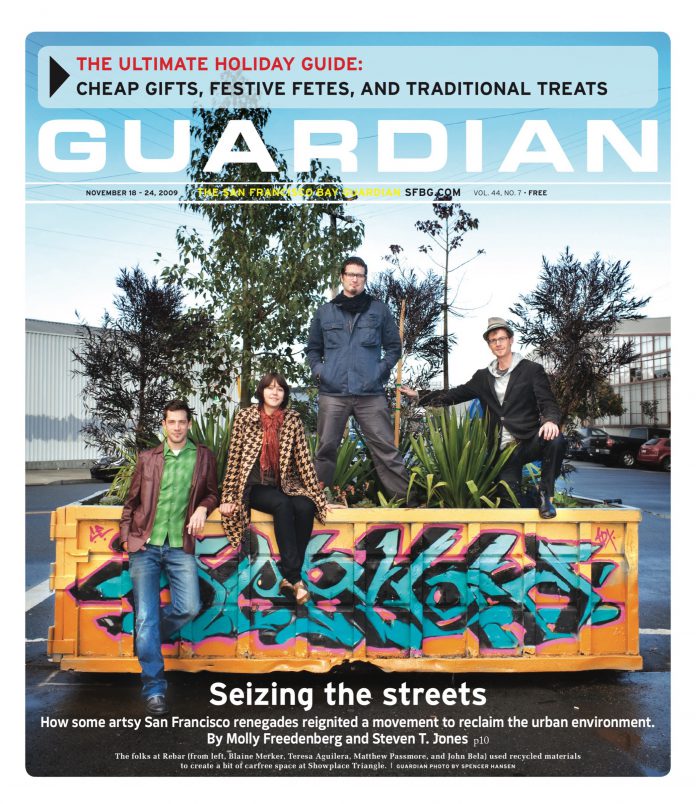arts@sfbg.com
VISUAL ART/LIT Teresa Hak Kyung Cha isn’t the most famous female representative of conceptual art and the marriage between text and film. But this visual artist and prose lyricist — born in 1951, killed in 1982 — found new zones between film language and the written word. Her body of work, now a hallmark for lesser-known Asian and feminist artists, roughly spans from 1972 to 1981. Cha consciously employs the fragmentation and displacement of text on a page, the flap of an envelope, or carefully selected superimposed images in film, as in the unfinished circa-1980 White Dust From Mongolia.
In White Dust, a young Korean woman experiences physical, cultural, and psychological alienation in China when she is forced to leave Korea during the Japanese occupation. Cha’s purposeful isolation of language and deployment of linguistic breakdowns is instrumental in showing the cultural and geographical dislocation experienced by the film’s main character. In a project proposal, Cha writes that this harrowing experience causes the film’s young woman to "lose all memory and her capacity for speech." The question of whether White Dust‘s female subject can be likened to the artist herself has generated speculation by art historians and museum curators alike.
White Dust superimposes images of Korean women milling through a market and the face of a girl trying to remember. Was Cha creating a story about herself within American society? In 1980’s "Surplus Novel," one of Cha’s lyric poems within Exilee/Temps Morts: Selected Works (University of California Press, 288 pages, $24.95), the author recounts the personal experience of being called a "Yoko Ono," a fraction of one moment within a lifetime of painful cultural estrangement.
On the page, in medias res, are Cha’s deliberately fragmented words evocative of mistaken identity and the splintering of self? In her journals, she notes that she is primarily interested in "how words and meanings are constructed in the language system itself, by function or usage and how transformation is brought about through manipulation, processes such as changing syntax, isolation, removing from context, repetition, and reduction to minimal units."
Cha the conceptual literary artist was interested in showing and interpreting cultural detachment through her art, fueled by examples from the breathing wound of daily life. Even with a grant, Cha never completed White Dust. She was forced off Seoul’s streets due to political unrest in Korea following the October 1979 assassination of President Park Chung Hee. Three years later, she was murdered in New York City by a serial rapist working as a security guard.
The meanings and appearances of words are to the fore as one walks the rounds of "Theresa Hak Kyung Cha: Earth," a Berkeley Art Museum exhibition curated by Constance M. Lewallen, who also edited Exilee/Temps Morts: Selected Works. Words in French, Korean, and English are interspersed with the white space of blank pages that yield no answers. The French word feuilee — which can translate to leaves of a page or literally to "leaf"— is typed in different positions on several sheets of white paper. This gesture may embody the physical movement of falling leaves in autumn, or the structure of Cha’s writing.
Viewers must forge their own interpretations of Cha’s elliptical and occasionally whimsical texts, which sometimes read like song lyrics or chants. Cha’s words lean one toward a growing belief that it is our literary license to break her words down into our own meanings — to shift our attention from the storyteller to the story told. Perhaps then the reality of her murder in the SoHo district’s Puck Building might not be such a slap in the face.
Tethered by her untimely death, the caliber of Cha’s contribution to the art world remains a puzzle. Yet the aesthetic pulse of the day orders one to ignore the conceptual fray. Cha is a thoroughly detail-oriented literary and visual artist. Her methodical work doesn’t entertain or dazzle. It is open-ended in a way that requires its audience to supply part of the vision.
THERESA HAK KYUNG CHA: EARTH
Through Dec. 20, $5–$8 (free for UC students and children)
Berkeley Art Museum
2626 Bancroft, Berk.
(510) 642-0808

